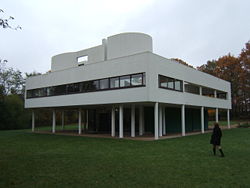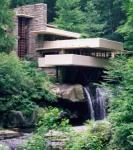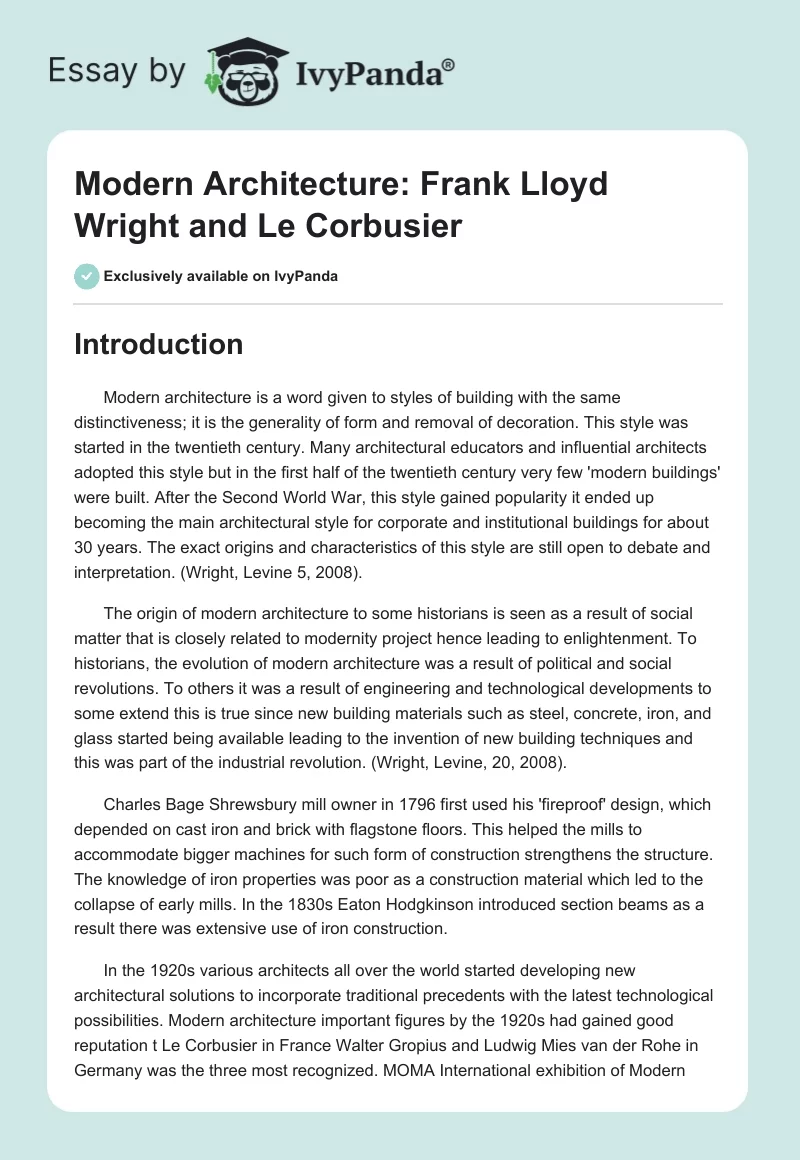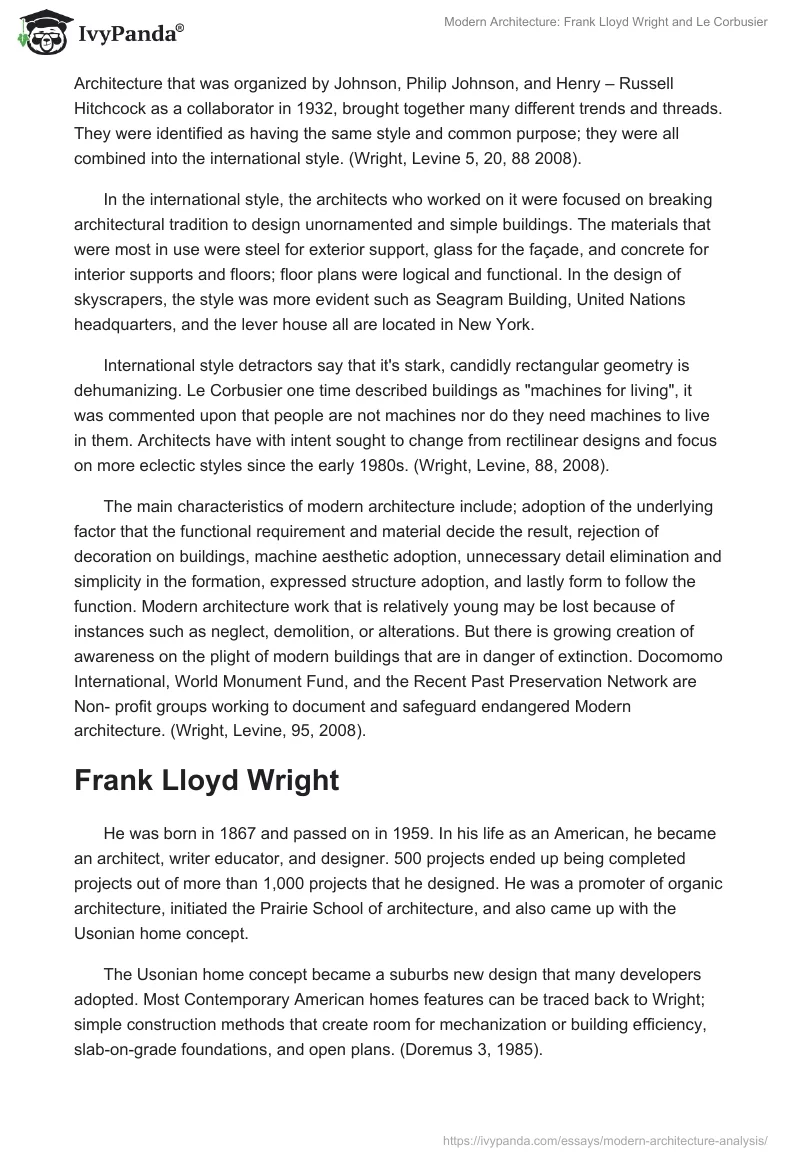Introduction
Modern architecture is a word given to styles of building with the same distinctiveness; it is the generality of form and removal of decoration. This style was started in the twentieth century. Many architectural educators and influential architects adopted this style but in the first half of the twentieth century very few ‘modern buildings’ were built. After the Second World War, this style gained popularity it ended up becoming the main architectural style for corporate and institutional buildings for about 30 years. The exact origins and characteristics of this style are still open to debate and interpretation. (Wright, Levine 5, 2008).
The origin of modern architecture to some historians is seen as a result of social matter that is closely related to modernity project hence leading to enlightenment. To historians, the evolution of modern architecture was a result of political and social revolutions. To others it was a result of engineering and technological developments to some extend this is true since new building materials such as steel, concrete, iron, and glass started being available leading to the invention of new building techniques and this was part of the industrial revolution. (Wright, Levine, 20, 2008).
Charles Bage Shrewsbury mill owner in 1796 first used his ‘fireproof’ design, which depended on cast iron and brick with flagstone floors. This helped the mills to accommodate bigger machines for such form of construction strengthens the structure. The knowledge of iron properties was poor as a construction material which led to the collapse of early mills. In the 1830s Eaton Hodgkinson introduced section beams as a result there was extensive use of iron construction.
In the 1920s various architects all over the world started developing new architectural solutions to incorporate traditional precedents with the latest technological possibilities. Modern architecture important figures by the 1920s had gained good reputation t Le Corbusier in France Walter Gropius and Ludwig Mies van der Rohe in Germany was the three most recognized. MOMA International exhibition of Modern Architecture that was organized by Johnson, Philip Johnson, and Henry – Russell Hitchcock as a collaborator in 1932, brought together many different trends and threads. They were identified as having the same style and common purpose; they were all combined into the international style. (Wright, Levine 5, 20, 88 2008).
In the international style, the architects who worked on it were focused on breaking architectural tradition to design unornamented and simple buildings. The materials that were most in use were steel for exterior support, glass for the façade, and concrete for interior supports and floors; floor plans were logical and functional. In the design of skyscrapers, the style was more evident such as Seagram Building, United Nations headquarters, and the lever house all are located in New York.
International style detractors say that it’s stark, candidly rectangular geometry is dehumanizing. Le Corbusier one time described buildings as “machines for living”, it was commented upon that people are not machines nor do they need machines to live in them. Architects have with intent sought to change from rectilinear designs and focus on more eclectic styles since the early 1980s. (Wright, Levine, 88, 2008).
The main characteristics of modern architecture include; adoption of the underlying factor that the functional requirement and material decide the result, rejection of decoration on buildings, machine aesthetic adoption, unnecessary detail elimination and simplicity in the formation, expressed structure adoption, and lastly form to follow the function. Modern architecture work that is relatively young may be lost because of instances such as neglect, demolition, or alterations. But there is growing creation of awareness on the plight of modern buildings that are in danger of extinction. Docomomo International, World Monument Fund, and the Recent Past Preservation Network are Non- profit groups working to document and safeguard endangered Modern architecture. (Wright, Levine, 95, 2008).
Frank Lloyd Wright
He was born in 1867 and passed on in 1959. In his life as an American, he became an architect, writer educator, and designer. 500 projects ended up being completed projects out of more than 1,000 projects that he designed. He was a promoter of organic architecture, initiated the Prairie School of architecture, and also came up with the Usonian home concept.
The Usonian home concept became a suburbs new design that many developers adopted. Most Contemporary American homes features can be traced back to Wright; simple construction methods that create room for mechanization or building efficiency, slab-on-grade foundations, and open plans. (Doremus 3, 1985).
Wrights’s work entails innovative and original samples of many diverse building types which include churches, offices, hotels, and museums. Most of his building elements such as stained glass and furniture he often designed them. In both, Europe and United States Wright was a popular lecturer. In his lifetime he authored many articles and a total no of books amounting to twenty. American Institute of Architects acknowledged him as “the greatest American architect of all time” in 1991.
Personal concepts and style
Wright’s concept was the one known as organic architecture; it evolves naturally from the environment. The things that he considered most were the relationship between the building and the site and also the client’s requirements. For example, he made wood as the main raw material for wooded houses site, rambling floors were the characteristic of desert houses, and Cinder blocks characterized houses in rocky areas like in Los Angeles. (Doremus 3, 7, 17, 1985).
He considered the smallest ideas of organic architecture in his designs this was from his creation of big commercial commissions to Usonian houses. He considered every detail of both internal fixtures; chairs, carpets, light fittings, and external designs. He was among the first architects that designed and supplied custom-built, purpose-made furniture and fittings that integrated with the rest of the design. He also made it among the first to design and fit custom-built electric light fittings.
With the mechanization of the glass industry, Wright in his work embraced the use of glass fully, and in his philosophy of organic architecture, they fitted well. The glass created an allowance of interaction and the view of the outdoors, at the same time protection from the elements. Wright equals glass to the mirror of nature which is the lakes ponds, and rivers. (Doremus 3, 7, 17).
Frank Lloyd Wrights Guggenheim Museum

This museum took Wright a duration of 16 years and it is one of his most recognized pieces of work. From its fifth avenue site, the building is raised as a warm light brown spiral. It has a distinctive central geometry which intention was to allow guests to have a good experience of Guggenheim’s compilation of nonobjective geometric paintings with no difficulty by using the pulley to the highest point and then slowly come down seeing the artwork; central spiral ramp which has a floor entrenched with round shapes and light fixtures that are triangular this harmonizes the structure geometric nature. In completion of the museum, several Wrights significant particulars were left out an example being his require of the interior to be off white paint. Also, the designs are viewed while going up the curved walkway rather than descending from the top. (Doremus, 17, 1985).
Le Corbusier
Le Corbusier was born in Swiss in 1887 and in his 30s he gained French citizenship. He passed on in 1965. He was an architect, urban planner, writer, designer, and painter. He became known for his contribution to Modern Art. He initiated theoretical studies of contemporary high design. His main dedication was in providing favorable living conditions for overpopulated cities residents. His buildings were constructed all over central Europe, Russia, India, and each in South and North America. Le Corbusier’s career lasted 50 years. (Twombly30, 1979).
Tom Frampton, “Corbusier was most likely the most famous and certainly the most controversial architect of the twentieth century. His impact on the urban fabric and the way all have lived has been enormous due to the richness and diversity of his work as well as his fervently expressed philosophy of architecture”. (Twombly, 92, 56, 1979).
Personal concepts and style
Le Corbusier’s design of the Villa Savoye had a compilation of architecture five points that he had made clear in his book and journal. The five points included the use of pilotis – these are concrete stilts that are reinforced, free façade – nonsupporting walls designed according to the architect’s desire, open floor plan, ribbon widows strips, and lastly roof garden for compensation of the area the building is on. (Doremus 3, 7, 17).
Le Corbusier Villa Savoye

Le Corbusier Villa Savoye is considered by most people as one of his most influential works. Its location is outside of Paris in Poissy. Villa Savoye’s purpose was to act as a weekend country house. It is one of the most recognized architectural exhibits of the International Style. Its construction was considered finished in 1929. During World War II the house was ruined but it has been reconstructed and is now open to be seen.
Villa Savoye was symbolic of Le Corbusier for it put into consideration the “The Five Points”, his essential credo of a novel aesthetic of architecture made in reinforced concrete: the Pilotis that raise the building from the ground allowing the garden to be below, a terraced flat roof, free plan, horizontal windows and the façade that is freely designed. There is a contrast between the primary white exterior and the polychromatic interior. Stairs and ramps facilitate vertical movement. The use of a flat roof by Corbusier in this building was for functionality as he said but supposedly it was just the way it seemed to him as a design. But this roof after some time leaked thus failing in its functions Corbusier was almost taken to the court by the owner. (Blake, 10, 1976).
Comparison of the two works
Falling Water House

Edger Kaufmann Jr, a curator historian, philanthropist, and architect preserved his family’s Falling Water house that was designed by Frank Lloyd Wright as a public museum. Falling Water was one of Wright’s seminal architectural works in the twentieth century. It was designed after Kaufmann became fond of Wrights’ work. At the age of 24 Kaufmann resigned from his career as a painter to be a trainee at Wright’s Taliesin Fellowship. (Curtis, 90, 1994).
Mr. Kaufmann’s father visited him and decided to pay Wright to design for him a weekend house on land that he had in Bear Run, Pa, next to a waterfall near Pittsburgh.
It resulted in a structure that had a strong horizontal plane beam dramatically above the waterfall. Kaufmann Jr did not join college but became one of the great scholars of architecture and design in his country. Kaufman has published many books and essays on design and architecture. According to Kaufmann Falling Water is a fusion of organic architecture it put together man and nature. It was built by local craftsmen with sandstone quarried on the property. Its concept is to bring together environmental factors, native materials, function, construction process, and humans. (Secrest, 89, 1998).
According to Peter Blake Modern architecture story is told by the works and lives of three men that brought about a transformation in the cities that we live in. To him, Le Corbusier’s modern design had a luminous sense of form and Wright heralded a novel and theatrical concept of freedom and space and lastly, Mies came up with an almost Gothic order of structure. To him, the three architects give and the idea of the entire twentieth-century architecture duration. Thomas D. Sullivan of Washington Times says that “Blake has a way of opening one’s eyes to architecture.” (Blake, 10, 17, 82, 1976).
William Jr Curtis in his book says that Le Corbusier is one of architecture’s leading forces of the 20th century the forms that he created have ended up being modernism archetypes. Corbusier became a writer of polemic and a social visionary. He had a phenomenal authority of concept and fusion, that created a powerful architectural vocabulary basing it on a limited range of categories and elements and also he used it in the generation of architectural forms of compelling strength. (Curtis, 4, 1994).
Curtis studied all of Le Corbusier’s main buildings, from initial sketches to last accomplishment. He found out that Corbusier found inspiration in architectural tradition and nature. (Curtis, 4, 16, 90, 1994).
Wrights Broadacre city can be viewed as a way to mask the setting up of a city by distributing it out. Write writes “in Broadacres all is symmetrical but it is seldom obviously and never academically so.” Broadacre incorporates the cultural amenities of the city such as the stadium, electricity, water, zoo, and metropolitan services with the rural life bucolic majesty. (Curtis, 90, 1994).
Wrights’ push is in solving the problems of the modern city by inventing a modern city. His principles of little things “little farms, little homes, little factories…” is a dialogue against bourgeoisie and proletariat. Wright writes “The landlord is no happier than the tenant,” Broadacre is a society that has no class that what it does most is upsetting the society financial fabric according to Le Corbusier’s this is the Contemporary City. Corbusier’s contemporary city entails a labor force that uses transportation into the city and he designs for luxury housing. This model of Corbusier accelerates the capitalist labor force. This is a contrast to Wright for in his view technology of the day was expected to slow down life pace. Broadacre is supposed to be a way of miniaturizing production means. (Secrest, 15, 1998).
Wright and Corbusier defend the style by equal draconian procedures. According to Wright “Unwholesome life would get no encouragement”. His view of society which is utopian is impossible to compare to next to Corbusier’s view. Wrights and Corbusier plans are universal; they put great demands on the land below them this demand makes them universal. The plans can be implemented at any place because of their dedication to their principles. (Blake, 82, 1976).
In the land redistribution issue, both plans have different degrees. For Wright giving at least an acre to every household gains a similar effect of assuring no acre to every household. As part of social hierarchy, land ownership is muted in its redistribution for the Corbusier case it entails re-appropriation for communal employ. (Curtis, 90, 1994).
The simplest difference between Wright and Corbusier is their directionality of expansion. Wrights advocates for horizontal expansion, for the society they reach out across the landscape and stay close with the employ of technology. Cities expanding horizontally for Corbusier they remain close as the people have remained close since city existence, proximity. (Curtis, 4, 16, 90, 1994).
For Webber the “our failure to draw the rather simple conceptual distinction between the spatially defined city or metropolitan area and the social systems that are localized there clouts current discussions about the “crisis of our cities.”
Le Corbusier’s Villa Savoye and Frank Lloyd Wright’s comparing their two work we find that they are similarities on them. Le Corbusier refused that Wright had any influence on his works. There are similarities in the two architects’ works that we cannot conclude that it was by mere chance. (Curtis, 4, 16,1994).
Wright Guggenheim was completed in 1959 right after Villa Savoye, the argument can take another direction that it was Wright that was influenced by Le Corbusier’s work. The two pieces of modern architecture create emphasize the embrace of modern technology and also geometric volumes building experience. (Curtis, 4, 90, 1994).
Conclusion
It goes without much saying for it is obvious that Le Corbusier is one of the most admired, influential, and maligned architects in the twentieth century. He plays a big role in the Modernist story through his buildings and writings. His ideas of cities and homes are both innovative and influential. For post-war reconstruction, his ideas on urban living became a blueprint. The generation in Le Corbusier had little training in architecture. But his powerful conviction had it that the twentieth century would be an era of progress: the era that technological advances, engineering, and novel ways of living would change the world forever. (Wright, Levine, 20, 2008).
From the time of Le Corbusier’s death his contributions have been contested, his values and aspects in modern architecture differ in the various schools of thought and with the practicing architects. In building his later works they portrayed compound understanding impacts of modernity. (Secrest, 89, 1998).
To some Le Corbusier Extravagant heights i.e. the skyscrapers could not have existed if it were not for the presence of technology. A member of the New Urbanism movement James Howard Kunstler says that Corbusier’s style of urban planning is wasteful and destructive. On his idea of the housing projects in the public seem to encourage isolation of the poor society due to the colossal high rises and social ties weakening that is a requirement to development of communities. (Curtis, 4, 16, 90, 1994).
Wright as Le Corbusier was one of the famous and original American architects in the twentieth century. His influential ideas have affected how homes and offices are organized and designed in the contemporary world. His unique style emerged from his willingness to research various cultures to inspire him. In the early twentieth century, many architects were reproducing European styles. For Wright he was a strong believer in the power of a good design; it was supposed to make people informed and respectful to nature and their surroundings. (Twombly30, 92, 56, 1979).
Carla says that “Drawing inspiration from his native mid western prairie, he coaxed Americans out of their boxlike houses and into wide-open living spaces that suited the American lifestyle”. Organic architecture by Wright was an exodus from his day traditional architecture in which European style was dominant. He designed houses, office buildings, public buildings museums, and churches and his Prairie style is seen in most homes across the nation. (Blake, 10, 17, 82).
According to Wright, “Architecture is the triumph of Human Imagination over materials, methods, and men, to put man into possession of his own Earth. It is at least the geometric pattern of things, of life, of the human and social world. It is at best that magic framework of reality that we sometimes touch upon when we use the word ‘order”. (Secrest, 10, 1998).
Wright had five major influences on his work though he did not credit them in his designs. Also most of his employee’s designs he claimed as his. To him, like any other architect, his work was a collaborative process that borrowed ideas from other architects’ design. After his death and also after his death, Wright received honorary recognition for his achievements. Margaret says that “Wright understood buildings to be the background or framework for human existence,” for Wright believed that “Architecture gave dignity to daily life.” (Secrest, 89, 1998).
Reference
Doremus Thomas, Architectural Criticism, Van Nostrand Reinhold, 1985, ISBN:0442218370
Blake Peter, Architecture Modern, Norton, 1976, ISBN: 0393007960.
Curtis, 1994, J.R. William Le Corbusier, Phaidon, 1994, ISBN: 0714827908.
Secrest, Meryle, Architects/United, University of Chicago Press, 1998, ISBN: 0226744140.
Twombly C. Robert, Architects United States Biography, 1979, ISBN: 0471857971.
Wright, Lloyd Frank, Levine Neil, Architecture Individual Architect, Princeton University Press, 2008, ISBN: 0691129371.


